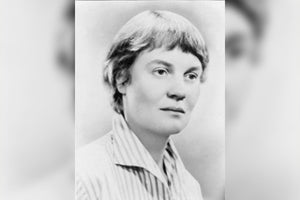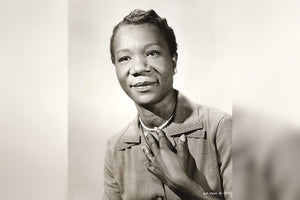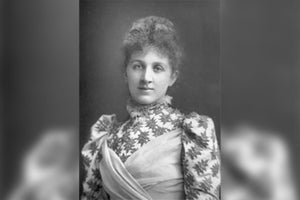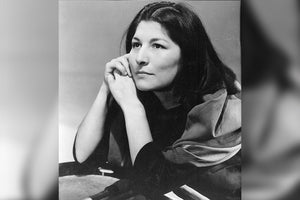Birthday: September 8, 1954- Present Day
Who is Ruby Bridges?
Ruby Bridges is an American activist on civil rights who started activism at a young age. At 6 years old, she was the youngest member of an African-American group for racial integration of American schools. In 1960, she became the first African-American student in William Frantz Elementary School.
Five Facts About Ruby Bridges
- She devoted her life to speaking against racism.
- She was the first African-American student to attend an all-white school in New Orleans.
- She was often escorted to school by federal marshalls.
- She was the inspiration for Norman Rockwell’s painting entitled “The Problem We All Live With”,
- She was awarded a Presidential Citizens Medal by President Bill Clinton on January 8.
Inspirational Quotes from Ruby Bridges
“Racism is a grown-up disease, and we should stop using our children to spread it.”
“Don’t follow the path. Go where there is no path, and start a trail.”
“Kids know nothing about racism. They are taught that by adults.”
Ruby Bridges Biography
Early Life
Ruby Bridges was a brave African-American woman born amid the Civil Rights Movement on the 8th of September, 1954 in Tylertown, Mississippi. A few months before her birth, the Brown v. Board of Education declared that segregating white from African-American students in schools was unconstitutional.
She was the eldest of five children. When she was 6 years old, Ruby’s parents volunteered her for the integration of a school in New Orleans as a response to the request of the National Association for the Advancement of Colored People in 1960.
A lot of white people were against integration. Following this, Bridges along with other black children had to be escorted to school by federal troops to avoid violence caused by resistance. The school in New Orleans, in an attempt to keep African-American students out of white schools, had the African-American students take an entrance exam. Bridges and five other children passed the exam.
Integration
Among the six who passed the entrance exam, two of the students decided to study in their previous schools, Bridges decided to attend William Frantz Elementary School, and the other three attended McDonogh No. 19 and was hailed as the McDonogh Three.
Bridges had to be escorted by federal marshals to and from the school. This was after a white woman said that she would poison Bridges on her way to school.
Initially, her father was reluctant because of the dangers that came with it. However, Bridges’ mother managed to convince him by saying that this is not only for Bridges’ sake but for all African-American students as well.
The first day, Bridges and her mother had to stay in the principal’s office the whole day because the protests wouldn’t allow them to proceed. Parents pulled their children out of the school and the teachers refused to teach. However, only one teacher, Barbara Henry, agreed to teach her. Barbara taught Bridges alone with the conviction that she was teaching a whole class.
During the second day of integration, a 34-year-old Methodist preacher, Lloyd Anderson Foreman, took his 5-year-old child to school past the angry crowd. Several days later, other white parents followed Lloyd and they allowed their children back to school.
Although Bridges encountered death threats and discrimination, she never faltered. In her first year, Robert Coles, a child psychologist became a volunteer counselor for Bridges. Coles later wrote a children’s book entitled ‘The Story of Ruby Bridges’ as his way of introducing Bridges’ story to other children.
Bridges’ family also suffered immensely under the protesters’ wrath. Her father lost his job and later separated from her mother. The family was also not allowed to shop in grocery shops and her grandparents were turned off as sharecroppers.
Despite this, there are still people who showed their support including a neighbor who gave Bridge’s father another job. Additionally, some white people continued to send their children to school despite the loud protests.
Adult Life
Ruby Bridges Hall is currently married and is a mother to 4 sons. She became a travel agent for 15 long years after she graduated before becoming a full-time parent. In 1999, she formed the Ruby Bridges Foundation which is devoted to promoting the values of respect, tolerance, and appreciation of diversity.
Bridges also became a subject and an inspiration for a lot of works of art such as the song Ruby’s Shoes by Lori McKenna and the movie Ruby Bridges in 1998. The Children’s Museum of Indianapolis permanently documented her life together with Anne Frank and Ryan White in November 2007 in an exhibit named “The Power Children: Making a Difference”.
Awards and Honors
Honorary degrees from the Connecticut College were awarded to both Ruby Bridges and Robert Coles in September 1995 where they made their first public appearance together. A statue of Bridges was put up in the William Frantz Elementary School courtyard to remember her bravery.
Also, two schools were named after her, one in Alameda, California, and one in Woodinville Washington. Other awards and honors she Bridges received include:
- 2000 - Carter G. Woodson Book Award
- January 8, 2001 - Presidential Citizen’s Medal
- November 2006 - Hailed ‘Hero Against Racism’ during the 12th annual Anti-Defamation League
- May 19, 2012 - Received an honorary degree from Tulane University
![]() Fast Shipping
Fast Shipping![]() Subscribe to our Newsletter
Subscribe to our Newsletter![]() 🌟 New Global Competition 🌟
🌟 New Global Competition 🌟















